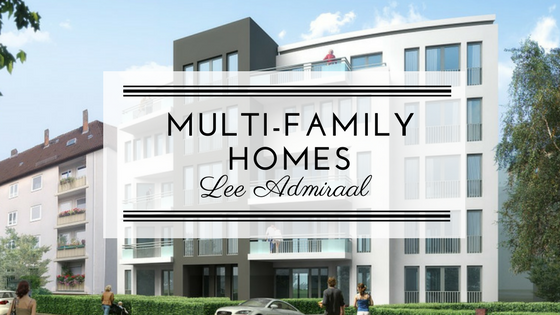Multi-Family Homes

Any veteran investor knows that a well-placed injection of funds into real estate ranks among the top strategies for generating sky-high ROI. Entrepreneur and New York Times bestseller Grant Cardone drives that endorsement a step further, citing tactfully planned real estate investments as master keys to unlocking wealth: “if you want to get super rich, get involved in real estate–but not just any real estate.” According to Cardone, the real estate sector currently boasts but one choice selection: multi-family housing. Cardone notes: “get into multi-family the right way, and it could be the best investment of your life.”
While the moniker “multi-family housing” might conjure mental images of several clans crammed into a shared kitchen, the reality of multi-family homes is thankfully much less cluttered. Multi-family or multi-residential homes are actually quite commonplace: they’re simply any structures built to house more than one family in separate units. Apartments, duplexes, and townhouses make up a few of the most popular multi-dwellings on the market, and market desire for multi-family homes is only growing.
Results of a 2016 industry review by Freddie Mac indicates that national demand for multi-residential housing has risen in recent years, spurred by strong demographic trends, a burgeoning employment outlook, and the increased cost of owning single-resident homes. The review adds that recent annual demand for multi-family housing was higher than predicted, chewing through much of the nation’s newly completed supply, despite the fact that 2015 saw the most multi-family units introduced into the market since 1989.
Apartment Demand Continuously Rises
In the words of Grant Cardone, “they are not building enough apartment buildings to keep up with demand,” resulting, unsurprisingly, in low vacancy rates, and high growth forecasts in coming years. A study conducted by George Mason University’s Center for Regional Analysis highlights a concrete example of rising multi-residential demand in the Washington DC area, attributing the boost to a region-wide addition of 700,000 residents between 2013-2020, many of whom are recent college graduates searching for rental space in DC’s urban core, or baby boomers facing retirement with a renewed interest in smaller yards and walkable communities.
It’s clear that multi-family homes are a popular and prominent fixture in real estate; one that offers tangible advantages to residents and investors alike. Any resident can appreciate the perks of renting multi-residential: the all-inclusive amenities, utilities, and maintenance, not to mention the nonexistent property taxes and discounted insurance premiums. And if multi-family’s glowing endorsement courtesy of Mr. Cardone (a man worth $350 million) isn’t sense enough, investors need only skim the data to confirm trends toward value in multi-family housing.

